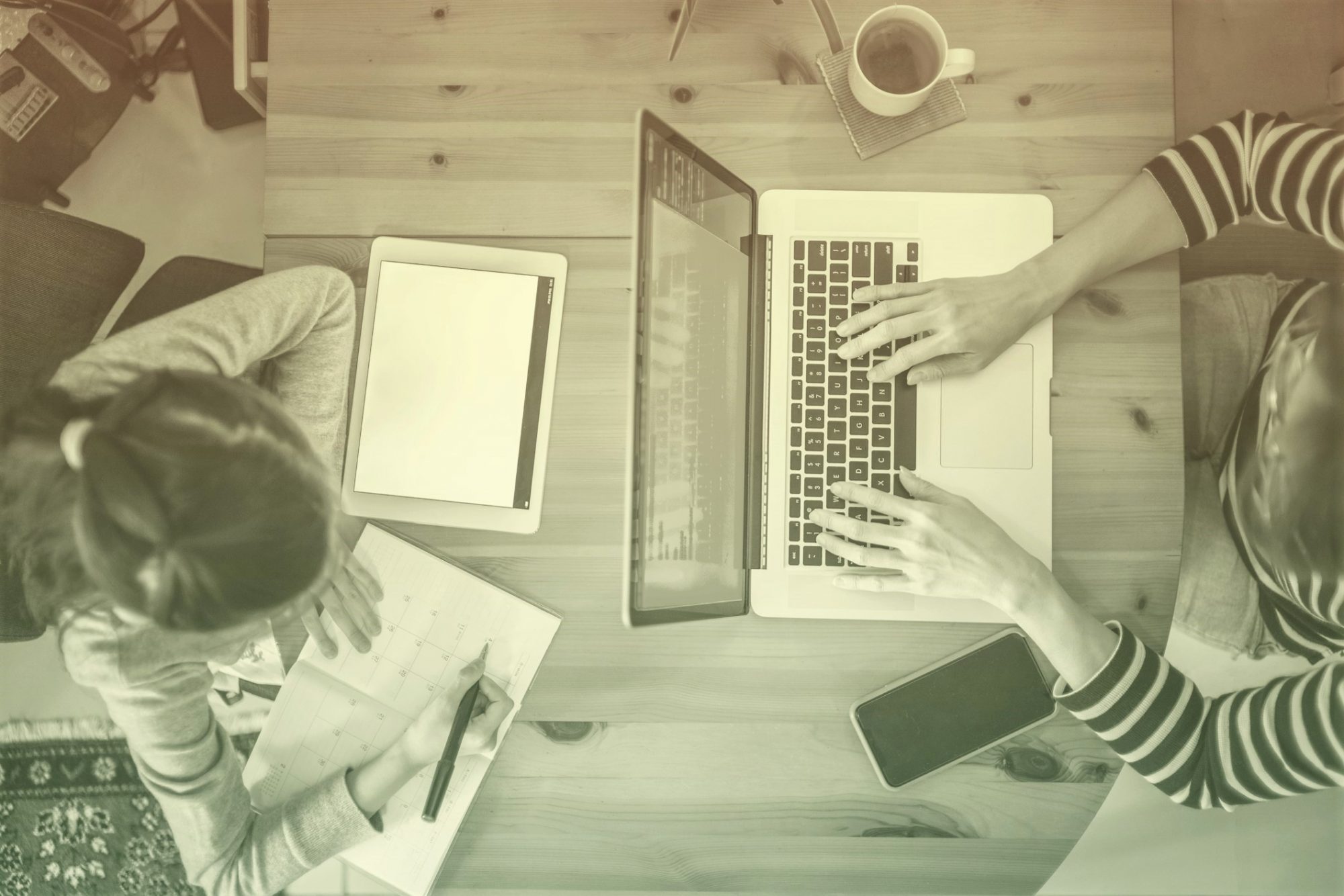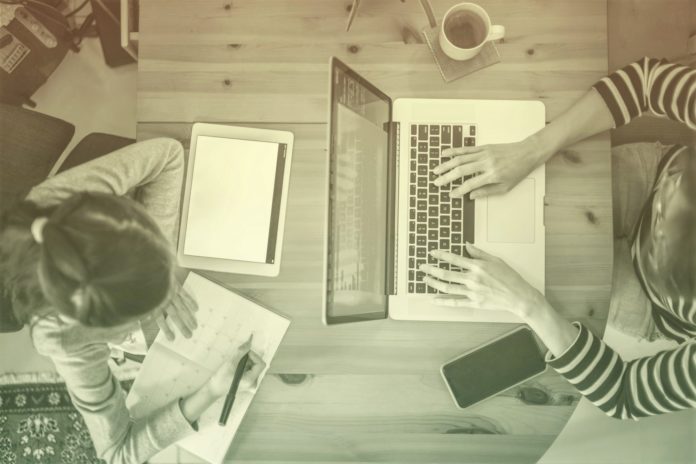
The conversation around reopening schools in the fall is as contentious as ever as the pandemic goes on—with over 4 million confirmed COVID-19 cases in the U.S. alone. The White House is pushing for all schools to open back up for in-person education, the American Academy of Pediatrics (AAP) recommends opening schools, but only if individual communities and local health officials deem it safe, and many educators and parents around the country are calling for remote learning at the start of the school year. Some parents are even taking their child's education into their own hands, opting for homeschooling solutions.
According to the National Center for Education Statistics, roughly 3 percent of school-age children are homeschooled, but all signs are pointing to this number growing, especially now due to the pandemic. A new HuffPost/YouGov survey found that 42 percent of K-12 parents say schools should be completely closed or moved online in the fall, with only 19 percent of parents hoping for school to fully reopen again. This comes as no surprise, as parents are reacting to the ever-changing, oftentimes conflicting information on the coronavirus. Sure, children are more likely to experience mild symptoms if they do get it, but serious complications can arise, especially for those with underlying conditions. Then there's multisystem inflammatory syndrome (MIS-C), the new disease with ties to COVID-19, which forced some patients into pediatric intensive care units. The coronavirus is even impacting summer camps, with outbreaks happening in Missouri, New Jersey, and Texas. Still, many experts are calling for schools to prioritize opening for in-person instruction after summer break.
With all of this, it's no wonder parents are taking things into their own hands and looking for a fix. Thousands of parents have already created their own solution with "homeschooling pods"—in fact, local groups are popping up all over Facebook—where a few families come together to organize something akin to their own little private school, either under the instruction of the parents or a hired tutor.
In theory, the idea of a "homeschool pod" or "pandemic pod" makes sense—for parents and for teachers looking to escape the traditional school system right now and transition to a form of homeschooling. Five to 10 kids of similar ages are grouped together, the parents agree on a teaching style or educational program, and health risks are dramatically decreased just by the sheer number of children and educators involved. For those with health concerns, pods and online learning seem like even more of a no-brainer.
"I do not feel, under the current suggested guidelines, that I will be protected," says Kamron Robertson, a public school teacher in Surf City, North Carolina who's looking into teaching for Outschool, an online learning platform that some pods have utilized. "There are too many unanswered questions. My fiancé and I both have chronic illnesses, half of our staff is either high risk or has a spouse or child that is high risk. I think some people think teachers want to simply ‘get out of teaching’ or just be able to work from home, but this is not the case. I absolutely love my job. I love teaching and I love my co-workers and I truly enjoy working with my students. There is nothing that I would love more than to return to work, but I am not willing to compromise my health or not see my family."
The Centers for Disease Control and Prevention (CDC) reports that "the percentage of COVID-19 patients with at least one underlying health condition or risk factor was higher among those requiring intensive care unit (ICU) admission," with the most common conditions being diabetes mellitus, chronic lung disease, and cardiovascular disease. Right now in America, six in 10 adults have a chronic disease. But instead of underlying health conditions, there seems to be one common factor among these pods: money.
The average cost of homeschooling in the U.S. is upwards of $300 to $600 per year per child, according to the Home School Legal Defense Association (HSLDA), though pods already forming in New York and California cost $2,500 per child per month. For many Americans—who, on average, bring in $63,179 each year—these costs aren't only unrealistic, they're impossible, especially during the pandemic when more than 40 million people filed for unemployment and 1 in 5 can't find work.
"Parent pods are just a new method for some families to help their children get ahead," says Byron Sanders, president and CEO of Big Thought, a nonprofit working to close the achievement gap that already exists for low-income families, students of color, and non-native English speakers. "Research has shown for many years prior to COVID-19 that youth from marginalized communities often have 6,000 fewer learning hours than their more affluent peers by sixth grade. More affluent families are able to send their children to summer camps, after-school clubs, private tutoring, and weekend trips to museums and cultural centers. As a nation we need to be creating innovative ways for all youth to have access to high-quality educational enrichment."
Disadvantages abound for vulnerable students compared to those who are more affluent. In fact, Black students are more likely to receive school suspensions and be placed in special education, and are less likely to take AP or gifted and talented classes. Students of color are simply underrepresented in higher education, with Black and Hispanic students less likely to graduate if they do attend college.
"Youth in marginalized communities were already facing challenges to achieve an equitable education [and] have had even more barriers put in front of them due to COVID-19," says Sanders. "Red-lining, creative school district mapping, and other methods have led to a school system that is more segregated now than it was in the 1960s for much of the U.S. We must dedicate time, attention, and resources to ensuring that all of our nation’s youth have an equitable education."
At the end of the day, homeschooling pods are inherently unjust. "Based on what I’ve seen online, the learning pod movement appears to be led by families with means, a large portion of whom are white," Clara Totenberg Green, a social and emotional learning specialist in Atlanta public schools, wrote for the New York Times, calling them a modern form of segregation. "Paradoxically, at a time when the Black Lives Matter movement has prompted a national reckoning with white supremacy, white parents are again ignoring racial and class inequality when it comes to educating their children. As a result, they are actively replicating the systems that many of them say they want to dismantle."
According to the CDC, COVID-19 infection and death rates are disproportionately high among Black, Indigenous, and Hispanic communities. Regardless of age, Native American, Alaska Native, and non-Hispanic Black Americans are 5 times more likely to be hospitalized than white people, and Hispanic Americans are 4 times more likely. When white students make up a majority of the homeschool community, children of color are more likely to be the ones returning to school—safe or not—come fall.
"In a country where 75 percent of white people report that the network of people with whom they discuss important matters is 'entirely white, with no minority presence,' it is not a leap to predict that learning pods will mirror the deeply racially segregated lives of most Americans," Green wrote.
On top of an achievement gap that could grow wider, school funding could dramatically be cut as students leave their districts. That means potentially less money for the children who do still attend. “If dollars follow students, and in many states they do, that can mean that school budgets are directly reduced for each child that is no longer attending,” Jessica Calarco, Ph.D., a sociologist who studies educational inequality at Indiana University, told the New York Times. Sanders echoes this concern, pointing out that marginalized communities are more likely to have less funding for their schools in the best of times.
"The saying, ‘It takes a village,’ is a good way to look at this issue," says Robertson. "I think that if parents could reach out to others who they know may not have the same economic advantages and offer to include those children, then it could help everyone. I think we are all best served by helping others where we can and offering support in whatever way we are able to. Sadly, these disadvantages exist in our society regardless of whether or not school is in-person or remote, so recognizing these disadvantages and coming together as a community to support one another is one step we can all take to close this gap."













